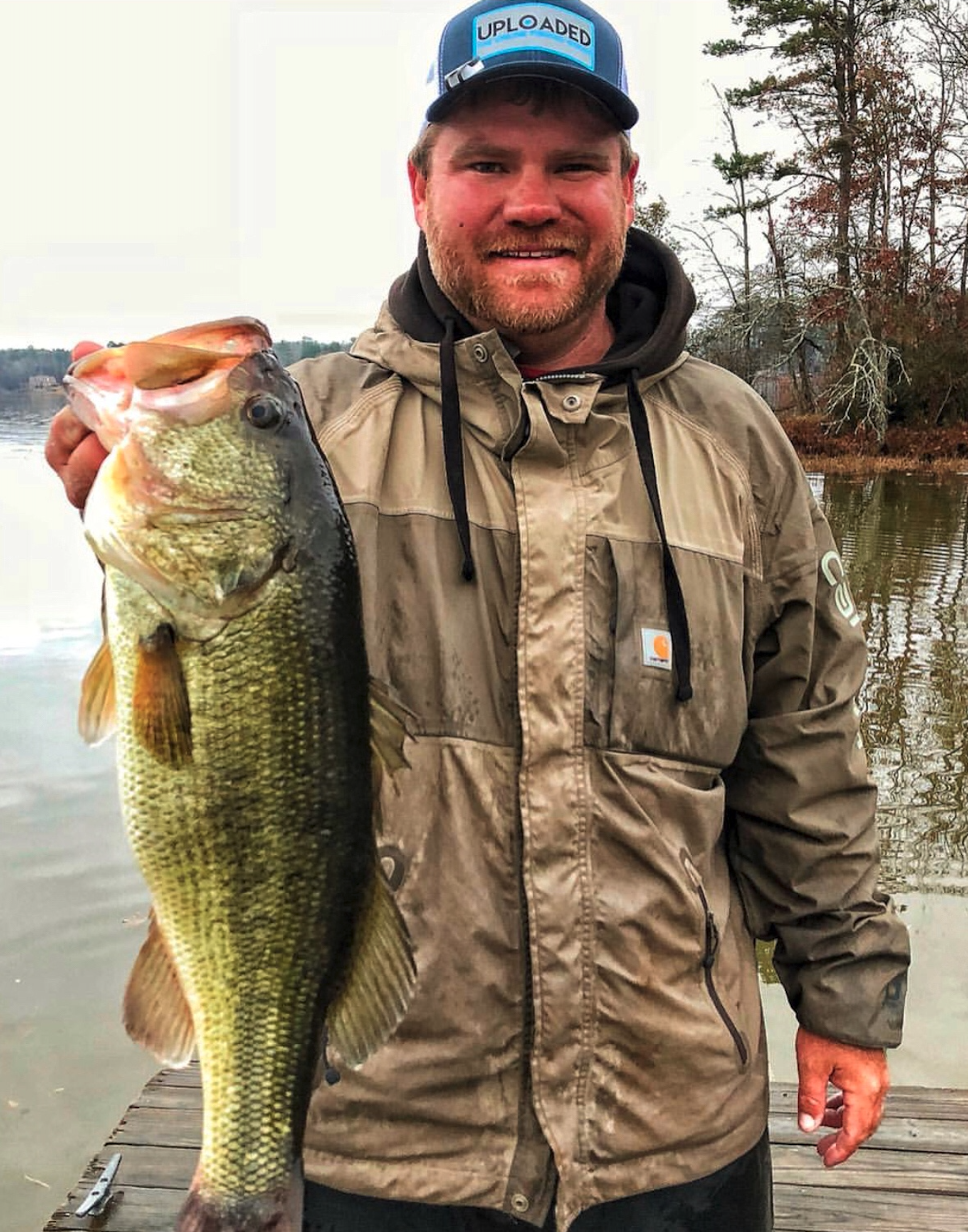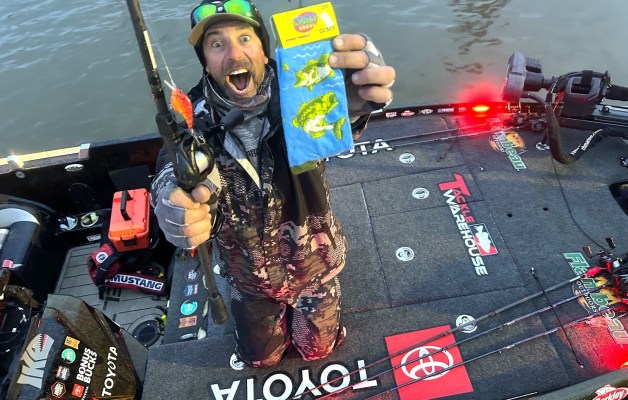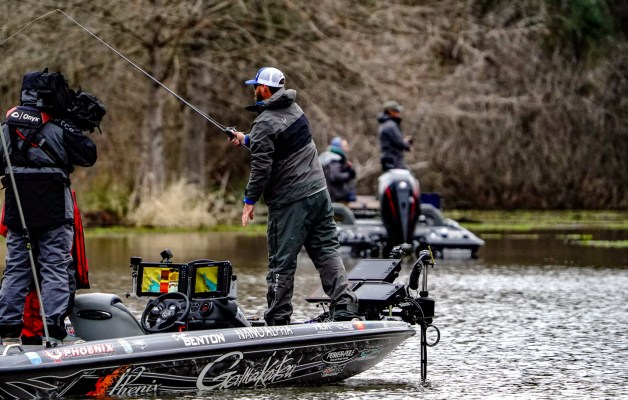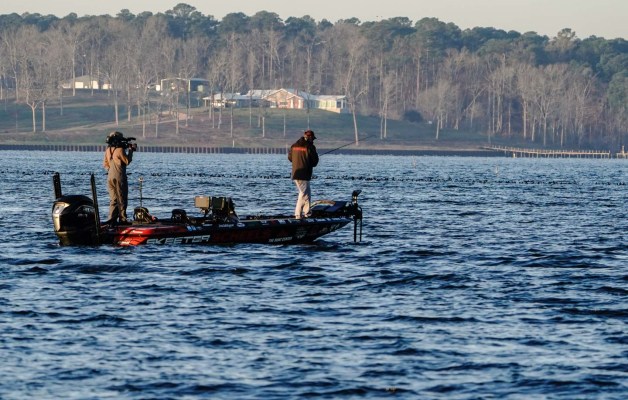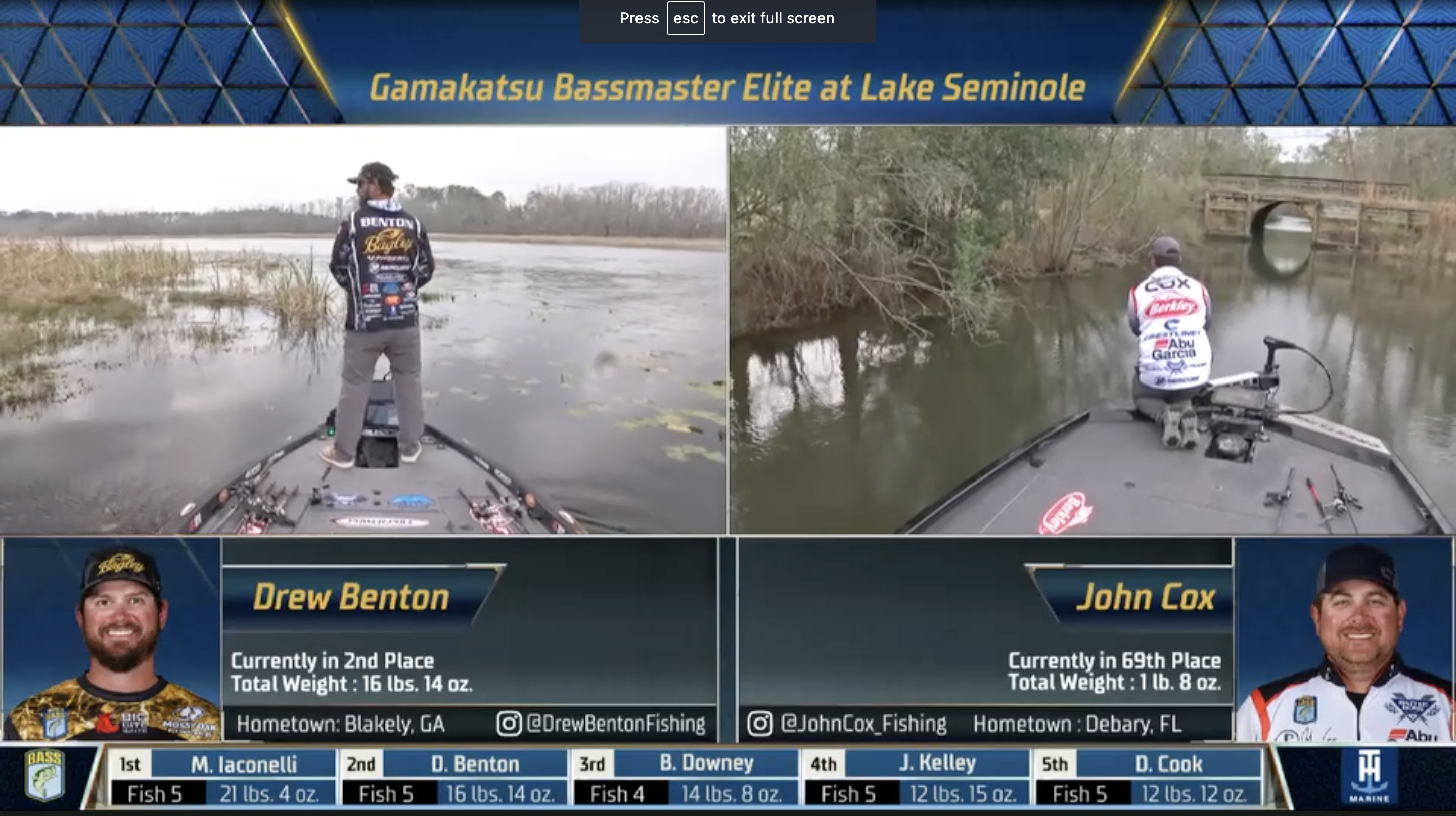
You’ll hear a lot of talk this week about bed fishing, where anglers target bass that are spawning. But there are two ways to do it. There’s sight fishing, where anglers will actually be looking at the bass on the bed as they try to catch them. And then there’s blind fishing, where anglers are targeting a bass that they either believe or know is on bed.
Here’s a good illustration of the two. Drew Benton has been blind fishing this morning for the most part. John Cox has been looking at them. Cox knows that, if he can see the bass, the bass can see him. So, he’s hunkered down trying to minimize his profile against the blue sky as much as possible. Some say this isn’t necessary, but bass have to be weary of birds of prey and other predators, who certainly have profiles against the sky that are visible to the bass. And Cox is one of the best at sight fishing. Thus, it makes more sense to apply his methods rather than spend much time questioning them.
Benton on the other hand has chosen to stay back off the fish he’s targeting, effectively blind fishing for bass that he’s found in practice. This makes the bass more comfortable on the bed, not being able to see a big boat and angler floating nearby.
Though the water is as clear as air where Benton is fishing, blind bed fishing also applies in stained and muddy water. Anglers will presume a bass is bedding in an area, typically alongside a stump or a clump of aquatic vegetation, and then soak a soft plastic where they think a bed might be. So they’re still bed fishing, but doing it blind.

